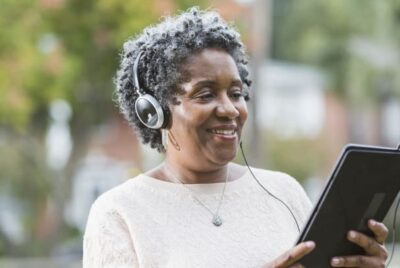Aging in Place
Aging in Place: Creating a Safe and Comfortable Home Environment
As we age, the comfort and safety of our living spaces become increasingly important. Many seniors prefer to age in place, meaning they choose to remain in their own homes rather than moving to assisted living facilities or nursing homes. This decision often requires some modifications to the home environment to ensure safety and convenience. In this article, we’ll explore the concept of aging in place and provide valuable tips on how to create a safe and comfortable home environment for seniors.

The Importance of Aging in Place
Aging in place has become a popular choice among seniors for several compelling reasons:
1. Familiarity and Emotional Well-being
Staying in the same home where one has created countless memories can have a positive impact on emotional well-being. The comfort of familiar surroundings can reduce stress and anxiety associated with major life changes.
2. Independence and Autonomy
Aging in place allows seniors to maintain their independence and autonomy. They can continue to make their own decisions, follow their routines, and live life on their terms.
3. Community and Social Connections
Seniors who age in place often have well-established social connections within their neighborhoods. This sense of community can provide invaluable emotional support.
Creating a Safe Home Environment
To make aging in place a viable and safe option, it’s essential to create a home environment that caters to the changing needs of seniors. Here are some key considerations:
1. Accessibility and Mobility
- Install grab bars: In bathrooms and other areas where seniors may need support, grab bars can provide stability and prevent falls.
- Ramps and handrails: If there are stairs leading to the entrance, consider adding ramps and handrails for easier access.
- Wider doorways: Widening doorways can accommodate wheelchairs or walkers, enhancing mobility.
2. Lighting
- Adequate lighting: Ensure that all areas of the house are well-lit to reduce the risk of tripping or falling.
- Motion-sensor lights: These can be especially helpful in hallways and bathrooms, turning on automatically when someone enters the space.
3. Bathroom Safety
- Non-slip surfaces: Use non-slip mats in the shower and bathroom to prevent accidents.
- Raised toilet seats: These can make sitting down and standing up easier for seniors with mobility challenges.
4. Kitchen Modifications
- Lower countertops: Lowering countertops can make food preparation more comfortable for seniors.
- Lever-style faucets: These are easier to use for individuals with arthritis or limited hand strength.
5. Bedroom Comfort
- Adjustable bed: Consider investing in an adjustable bed that can be raised or lowered for convenience.
- Comfortable bedding: High-quality mattresses and pillows can significantly improve sleep quality.
6. Emergency Preparedness
- Emergency response system: Many seniors opt for medical alert systems that can be used to call for help in case of emergencies.
- Accessible phone: Ensure that there’s a phone within easy reach in case of emergencies.
7. Regular Maintenance
- Home inspections: Regularly inspect the home for any potential safety hazards and address them promptly.
- Fall prevention: Keep walkways clear of clutter and make sure rugs are secured to prevent tripping.
Services to Support Seniors Aging in Place
Aging in place is a preferred choice for many seniors, as it allows them to maintain independence and stay in the familiar comfort of their homes. To facilitate this, a range of services and resources have emerged to assist seniors in living safely and comfortably at home as they age. In this article, we’ll delve into various services and support systems available to help seniors achieve their goal of aging in place.
Home Health Care Services
Home health care services are a valuable resource for seniors who wish to remain in their homes. These services encompass a wide range of medical and non-medical assistance:
1. Skilled Nursing Care:
- Registered nurses can provide medical care such as wound dressing, medication management, and monitoring vital signs.
2. Physical and Occupational Therapy:
- Therapists help seniors regain or maintain mobility and independence through exercises and adaptive strategies.
3. Personal Care Assistants:
- Personal care assistants can help with activities of daily living (ADLs), including bathing, dressing, and meal preparation.
4. Companion Care:
- Companions offer social interaction and can assist with light housekeeping, errands, and transportation.
5. Telehealth Services:
- Seniors can access medical consultations and monitoring remotely, reducing the need for frequent doctor visits.
Home Modification Services
Ensuring that a senior’s home is safe and accessible is crucial for aging in place. Home modification services provide the expertise needed to adapt the living environment:
1. Ramp and Stair Lift Installation:
- These devices make it easier for seniors with mobility challenges to move around their homes safely.
2. Bathroom and Kitchen Renovations:
- Experts can redesign these spaces to be more accessible, with features like walk-in showers and lowered countertops.
3. Widening Doorways:
- This modification allows for easier passage of wheelchairs and walkers.
4. Anti-Slip Flooring and Handrails:
- These safety enhancements reduce the risk of falls, a common concern for seniors.
Transportation Services
Maintaining mobility is essential for seniors who wish to age in place. Transportation services can help seniors get around:
1. Senior Transportation Programs:
- Local organizations often offer transportation services for seniors to reach medical appointments, grocery stores, and social activities.
2. Rideshare Services:
- Companies like Uber and Lyft provide convenient on-demand transportation options for seniors who may no longer drive.
Meal Delivery and Nutrition Services
Proper nutrition is crucial for seniors’ health. Several services cater specifically to their dietary needs:
1. Meal Delivery Programs:
- These services offer nutritious, pre-prepared meals delivered to seniors’ doorsteps, eliminating the need for cooking.
2. Nutrition Counseling:
- Registered dietitians can provide personalized dietary guidance to address seniors’ unique nutritional requirements.
Home Safety and Security Services
Ensuring the safety of seniors living alone is a priority. Home safety and security services include:
1. Emergency Response Systems:
- These systems allow seniors to call for help in emergencies by pressing a button on a wearable device.
2. Home Security Systems:
- Installing security systems can deter intruders and provide peace of mind.
Care Coordination and Geriatric Care Management
Care coordination services help seniors and their families navigate the complexities of aging in place:
1. Geriatric Care Managers:
- These professionals assess seniors’ needs and create comprehensive care plans, coordinating medical, social, and support services.
2. Medication Management:
- Services exist to help seniors organize and take their medications correctly, reducing the risk of medication-related issues.
Aging in place can be a rewarding and viable choice for many seniors, but it requires a network of supportive services and resources. These services not only enhance the quality of life for seniors but also provide peace of mind for their families. By accessing the right combination of healthcare, home modifications, transportation, nutrition, and support, seniors can enjoy their golden years in the comfort of their own homes, surrounded by the memories and familiarity they cherish.
Top-Rated Home Aids for Seniors
As seniors age, they often face challenges in performing daily activities independently. Fortunately, there’s a wide range of home aids designed to enhance their safety, comfort, and quality of life while aging in place. In this article, we’ll delve into some of the top-rated home aids for seniors, which can make a significant difference in their lives.
1. Mobility Aids:
a. Walkers:
- Walkers provide stability and support for seniors with mobility issues. Features like wheels and seats offer added convenience. Buy a top-rated walker from Amazon.
b. Canes:
- Canes come in various styles, including quad canes and offset canes, to provide balance and assistance with walking.
c. Wheelchairs and Transport Chairs:
- For seniors with limited mobility, wheelchairs and transport chairs offer a means of getting around comfortably.
2. Bathroom Aids:
a. Grab Bars:
- Installed in bathrooms, these provide essential support when entering and exiting the shower or using the toilet.
b. Shower Chairs and Transfer Benches:
- These aids enable seniors to shower safely while seated, reducing the risk of slips and falls.
c. Raised Toilet Seats:
- Raised toilet seats make it easier for seniors to sit down and stand up, promoting independence.
3. Home Safety Aids:
a. Emergency Alert Systems:
- Wearable devices or home units allow seniors to call for help in emergencies, providing peace of mind for them and their caregivers.
b. Door and Window Alarms:
- These alarms enhance home security by alerting seniors to any unauthorized entry.
c. Non-Slip Flooring and Tapes:
- These aids reduce the risk of falls by providing better traction on floors and stairs.
4. Kitchen Aids:
a. Adaptive Utensils:
- Ergonomically designed utensils make eating easier for seniors with limited hand strength or dexterity.
b. Reacher Grabbers:
- These tools help seniors reach items on high shelves or pick up objects from the floor without bending.
c. Automatic Shut-Off Kettles and Stoves:
- These safety devices reduce the risk of accidents by automatically turning off when not in use.
5. Comfort and Convenience Aids:
a. Lift Chairs:
- Lift chairs assist seniors in standing up from a seated position and reclining comfortably.
b. Adjustable Beds:
- Adjustable beds allow seniors to find the most comfortable sleeping position and ease health issues like acid reflux or snoring.
c. Large-Button Phones and TV Remotes:
- These aids enhance communication and entertainment by making devices easier to use.
6. Medication Management Aids:
a. Pill Organizers and Dispensers:
- These aids help seniors organize and take their medications correctly, reducing the risk of medication-related issues.
b. Medication Reminder Devices:
- Some devices provide audio or visual reminders to take medication at the prescribed times.
7. Vision and Hearing Aids:
a. Magnifying Glasses and Lamps:
- These aids assist seniors with low vision in reading and other close-up tasks.
b. Hearing Aids:
- Hearing aids improve seniors’ ability to communicate and engage in social activities.
The top-rated home aids for seniors play a vital role in enhancing their quality of life, independence, and safety while aging in place. When selecting these aids, it’s essential to consider the individual needs and preferences of the senior in question. Additionally, consulting with healthcare professionals or occupational therapists can help ensure that the chosen aids are the most suitable for the specific circumstances. Ultimately, these home aids empower seniors to maintain their autonomy and continue enjoying their daily activities in the comfort of their own homes.
Conclusion
Aging in place can be a fulfilling and comfortable choice for many seniors, but it requires careful planning and home modifications. By creating a safe and convenient living environment, seniors can enjoy the benefits of staying in their cherished homes while maintaining their independence and well-being. Whether you are a senior considering aging in place or a caregiver helping a loved one make this choice, prioritizing safety and comfort should always be the top concern. Click here to read how to create a senior friendly fitness routine,




